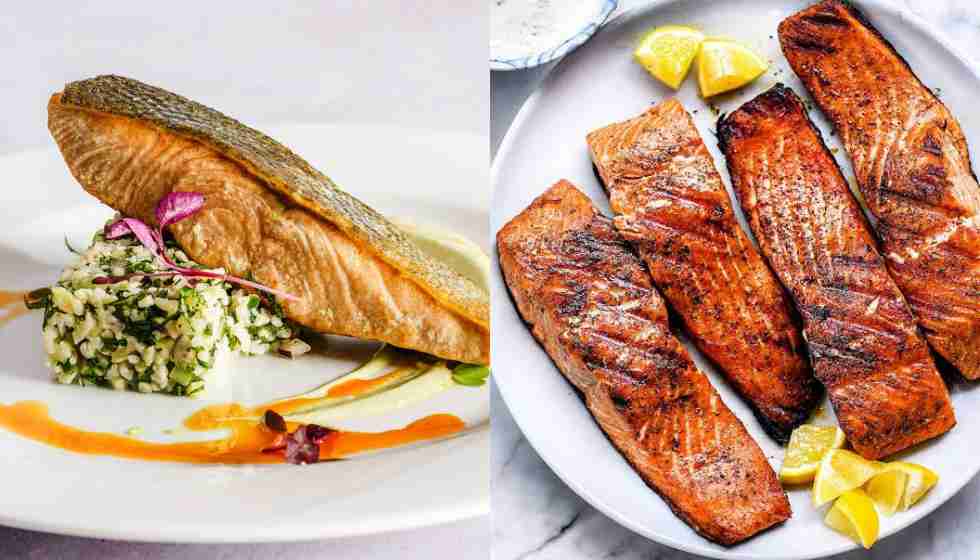Fishes are very healthy to eat, either fried or boiled depend upon the person how to eat. Fishers are of different types. Each fish have benefits.
Fish is good to eat, and fish contains high-protein, particularly important for its omega-3 fatty acids, which are necessary fats that our bodies don’t deliver on their own.
Omega-3 fatty acids perform a crucial role in brain and heart health.
Omega-3s have been given to decrease inflammation and reduce the risk of heart disease. They’re necessary for prenatal development in children, too.
All types of edible fish are large in nutrients and protein and can highlight a delicious meal.
Common varieties of fish are cod, hake, and haddock. These are usually white kinds of fish with a delicate taste and mild flavor.
Also, darker-toned fish such as pink salmon or red tuna are prevalent due to their delicious taste and omega-3 fatty acids.
Eat more fish eat fish at least two times per week as a portion of a healthy diet recommends by the American Heart Association.
Different types of fishes
Salmon
Salmon is an excellent option for your diet overall but opt for the wild species if your budget permits.
Salmon is an excellent oily fish that is well-known for its pink-colored meaty flesh.
This magnificent species of fish in the family Salmonidae and is similar to trout. Depending on if salmon is found in the wild, the flesh may be some darker color.
For example, wild salmon is usually a dark pink to red or orange color, whereas farmed salmon usually is light pink.
Tuna
Tuna is a deep-sea fish and one of the usual expensive fish. Fifteen species of tuna relate to the tribe Thunnini. Some species of tuna are also some of the highest edible fish in the sea.
The Atlantic bluefin tuna can rise to 15 ft. (4.6 m) long and weigh over 684 kg.
Fresh tuna is a dark-colored meaty fish that can vary in color from pink to dark red.
Tuna steaks have a meaty taste with a sweet, mild flavor, and they taste nothing like the canned kind. As tuna cooks, it changes from red to a light tan color.
Herring
Herring is highly rich in vitamin B12, and herring is also a great source of niacin, vitamin B6, vitamin D, and phosphorus.
Like additional oily fish, it’s an excellent source of omega-3s. Herring is made in various ways, such as pickles, dried, smoked, or salted.
Lake trout
Lake trout is low in calories but large protein intake.
A healthy source of omega-3 fatty acids, trout is also typically rich in B vitamins (thiamin, riboflavin, and niacin), vitamin D, phosphorus, and iron. Trout is also an excellent dietary source of iodine.
Sea Bream
Fish in the family Sparidae are collectively named sea bream, and they usually inhabit the Mediterranean and Eastern Atlantic coasts.
Over 150 species of sea bream and most ought a silver-colored body and a long dorsal fin.
Sea bream is a typical fish dish in restaurants in Mediterranean countries. It has a light, delicate flavor and succulent whitish-gray flesh.
Many fish enthusiasts rate sea bream as one of the tastiest of all the whitefish available.
This kind of fish is also famous for people who hold Mediterranean cuisine.
Bass
Bass is a generic term that includes a large number of fish, both freshwater and seawater.
Popular species of bass cover striped bass, largemouth bass, and sea bass. Like different fish on this list, the bass is rich in omega-3s and protein.
Bass is also a great source of manganese, phosphorus, and vitamin B12.


